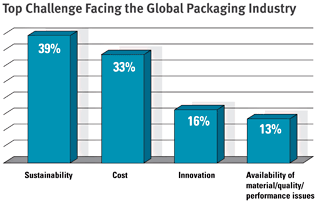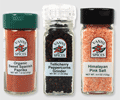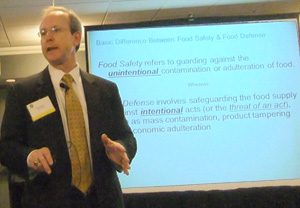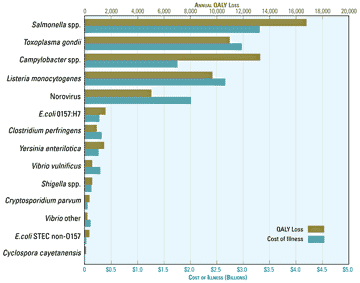
Losing weight: It's up to individuals and processors
Latest numbers from the
The top obstacles to achieving a healthy weight, according to the survey, are: not enough exercise (69 percent), metabolism slowing (62 percent) and too much snacking (52 percent).
“Many have taken the first step-admitting they want to lose weight for overall better health,” says Beth Hubrich, a registered dietician with the Calorie Control Council. In fact, one-half of American adults now say they need to lose at least 10 pounds, up from 40 percent in 2004. Health experts say it takes a lifestyle change to succeed. “It’s all about calories in and calories out. Reduce calories while eating a balanced diet, and burn calories through physical activity,” she adds.
Overall, the study found weight-conscious Americans are using the following methods to lose weight: cutting back on high-sugar foods (86 percent), eating smaller portion sizes (85 percent) and consuming low-calorie and sugar-free foods and beverages (78 percent). Dieters realize short-term measures-skipping meals, using diet pills and following restrictive diets-don’t work.
Several food processors have been studying the problem and are providing solutions that emphasize controlling portion sizes. For example, Cardiologist Dr. James Rippe, founder and director of the Rippe Lifestyle Institute, led two 30-day research studies, sponsored by ConAgra Foods, exploring how weight loss using portion-controlled Healthy Choice meals affected quality of a person’s diet and quality of life.
“This study reinforces the fact that portion control is fundamental to successful weight loss,” says Mark Andon, vice president, nutrition, ConAgra Foods. In the study, participants replaced at least 10 meals per week with Healthy Choice frozen meals, and also incorporated walking for a physical activity.
Participants lost an average of six pounds and reduced waist circumference by about one inch. In addition, despite the decrease in calories, participants significantly improved the quality of their overall diets by increasing dietary fiber, reducing saturated fat intake by 50 percent and consuming 30 percent less cholesterol and sodium.
For more information on obtaining the Calorie Control Council’s study, Low-Calorie Product Usage and Weight Control Habits Survey, contact Stan Samples, 678-303-2996.
Sustainability key factor in packaging
“Sustainable, cost-effective solutions that reduce packaging’s environmental footprint are a top goal across geographies,” says William J. Harvey, president, DuPont Packaging and Industrial Polymers. “This is especially true in the food and beverage industry, where consumer demand for products supporting health and wellness go hand-in-hand with a demand for more sustainable solutions.”
Meeting sustainability challenges requires multiple strategies, according to survey results. Of those respondents working on sustainable packaging, 65 percent say their efforts are focused on design for recyclability or use of recycled content, 57 percent are focused on weight reduction, 41 percent rely on renewable or bio-based materials, and 25 percent say they are focused on compostable materials.
Of those who responded to the first question on identifying packaging challenges, the results tallied 41 percent from the
PACK EXPO and Anuga FoodTec announce strategic partnership
The partnership complements the
Anuga FoodTec 2012 (March 27-30; Cologne, Germany) will be the central meeting point for the international food and beverage industry, with approximately 1,200 exhibitors and 34,000 attendees expected to participate. The show’s cross-sector, process-oriented approach covers all aspects of processing, packaging, hygiene, storage and distribution in food and beverage production.
In addition to promoting attendance at the PACK EXPO trade shows to European food and beverage processors, Anuga FoodTec will have a presence at PACK EXPO Las Vegas 2011 to help packaging and processing suppliers seeking to expand into the European market. To help Anuga FoodTec continue expanding its presence in the packaging sector, PMMI will sponsor the North American Packaging Pavilion at Anuga FoodTec 2012.
For more information about PACK EXPO Las Vegas 2011 or to register, visit PACK EXPO, or contact PMMI’s Show Department at 703-243-8555, or email expo@pmmi.org.
For more information about Anuga FoodTec 2012 or to register, contact Koelnmesse’sAutomation News

Disconnected business applications? Time to upgrade
“Our old system was inefficient and required a lot of manual data entry, duplicate keying and detailed lookups, when many of these processes should [have been] either eliminated or automated,” says Patty Townsend, vice president and CFO of Golden Flake Snack Foods. “Our business has grown substantially and, in turn, so has the volume of our data.”
Golden Flake Snack Foods Inc. selected Lawson QuickStep Food & Beverage, an industry pre-configured solution based on the latest version of the Lawson M3 Enterprise Management System. The software meets a variety of demands, from fast-moving industry supply chains and short order-to-delivery cycles to the handling of perishable products and raw materials. When fully implemented, the software will help Golden Flake Snack Foods reduce the time, cost and risks associated with bringing products to market.
“The Lawson system will help provide us with the flexibility and features necessary to adapt to the changing needs of our business. Ultimately, this will help us continue to provide excellent customer service,” says Townsend.
As part of this enterprise software deployment, Golden Flake also licensed select Lawson Human Resource Management applications, including Absence Management and Payroll. These applications will help the processor better track and manage employee time off and help streamline payroll operations, including quarterly filings and reporting.
For more information, Debbie Tolbert, Lawson, 651-767-7000.
Antiquated ERP not suited to complex orders
Vanns acquires spices from around the globe as well as from importers in the
Though the processor has several large customers for which it maintains inventories, it is extremely difficult to stock items, particularly with the packaging requirements of 80 private-label customers. “Our customers tell us how many of each spice or blend they want, and we produce the desired labels and fill the packaging to order,” says Whitlock.
In May 2009, Vanns retired its old ERP software, which was not only dated, but also unable to produce required reports or perform track and trace. The processor installed SYSPRO ERP software to bring its system up to date.
Whitlock notes the company’s new ERP software also easily enables the custom-shop manufacturing functionality necessary to fill the numerous spice blends and private label order variations. “In addition to various spices and spice blends, some customers want glass bottles with red caps, some want glass bottles with green caps, and others want plastic bottles with green caps. Using the SYSPRO inventory future-free report and trial kitting functionalities, we can easily determine if we have the inventory on hand sufficient to fill the orders and, if not, what we must order.
“A requirement of our supermarket customers is that we have the ability to do lot tracking. Though we make over 2,000 blends of spices, with SYSPRO Lot Tracking, we can tell which spice went into which blends. In fact, we can trace the origin of every grain of spice and into which blend it went-even into which bottle and onto which customer’s shelf,” adds Whitlock.
The software is also responsible for the stringent inventory controls now in place, says Whitlock. “Prior to our SYSPRO implementation, we had huge inventory variances, but now our inventory has been optimized to efficient levels. In the past, we were often short of product. Now, we’re getting the alarms and the information that we need to do things in a timely manner,” he adds. “Our previous software didn’t allow us to do that, and it was very cumbersome even to get an inventory report. Now, we’re doing it in black and white.”
The new ERP system has an integrated customer relationship management capability, allowing a tie-in lot to tracking and traceability. The software’s reporting functionality, linked in to Crystal Reports, allows Whitlock to show the board exactly what’s going on with all the products. In addition, the system lets him analyze the cost of commodities and ingredients, and it helps in order planning.
“We do have more efficient manufacturing now, and while a great deal is due to SYSPRO, we’ve also added quite a bit of new machinery,” says Whitlock. “However, since implementing SYSPRO, we actually have fewer employees, and we have more sales, so that in itself is indicative of the wisdom of our selection of SYSPRO.”
For more information, visit SYSPRO’s website, or contact April Vasquez, 714-437-1000, info@us.syspro.com.
Seven Kellogg bakeries receive EPA ENERGY STAR rating
The seven Kellogg facilities represent more than half of the 13 EPA-recognized US cookie and cracker bakeries from multiple companies. Collectively, these facilities prevent more than 85,000 metric tons of carbon dioxide annually compared to average performing bakeries. According to the EPA, these bakeries use one-quarter less energy than similar plants across the country.
The ENERGY STAR-certified bakeries include Kellogg Company’s Augusta Bakery, Augusta, GA; Cary Bakery, Raleigh, NC; Charlotte Bakery, Charlotte, NC; Cincinnati Bakery, Cincinnati, KY; Columbus Bakery, Columbus, GA; Florence Bakery, Florence, KY; and Louisville Bakery, Louisville, KY.
“This EPA recognition was the result of many projects and initiatives-both large and small-at our facilities, as well as the ongoing contributions and dedication from our employees,” says Alistair Hirst, senior vice president, operations, Kellogg Company’s US Snacks business unit. “Some of these efforts include installation of motion sensors and high-efficiency lighting as well as installing more efficient ovens and boilers, among other initiatives.”Food Safety News

Tighter food defense requirements seen by security expert
Speaking at an ADT Media Summit on food defense in Chicago May 10, the brewery’s regional security and emergency manager said security officers from a number of food and beverage companies have been working with the Grocery Manufacturers Association to lobby federal regulators to minimize the financial costs of food defense. “The single biggest cost factor to food companies [for FSMA compliance] was going to be food defense,” Powers said, and the industry has pressed hard for workable guidelines that would not turn plants into “
“There is nothing in FSMA that says you have to have electronic systems,” said Powers, “but you can’t [satisfy] FSMA without historical records of CCTV recordings, access card use” and maintenance records of system components.
Installing and maintaining security hardware can add up to significant capital expenditures, he conceded, but Powers said he has documented returns on investment of 10-40 percent on projects. He cited work for a major food company that began with a $1.6 million installation at a single manufacturing site. According to Powers, payback occurred in six months, an ROI of almost 45 percent. Ten distribution centers were equipped with $500,000-$1 million in surveillance equipment and generated returns of 15-25 percent.
Many of the returns were generated by charges assessed to vendors based on video surveillance. In one instance, cameras captured a delivery truck sideswiping a loaded trailer, toppling the trailer and resulting in $150,000 in damages, which the delivery company was forced to pay. Late delivery charges of $50,000 to $100,000 per site were realized by date-stamped video documenting late deliveries. At a
Soft savings from surveillance included the elimination of “contamination pranks” by employees within the plant, the virtual elimination of OSHA recordable injuries on the loading docks of another facility and the eradication of drug dealing and prostitution at a plant’s trailer yard.
For more on plant security, see:
“Plant Security: Access Granted,” FE, JAN 2011.
“National security at the dinner table,” Bill Ramsey, Frank Pisciotta, FE On line.
Salmonella the top killer
With the new FSMA legislation coming into law, regulatory agencies and processors alike are trying to develop risk-prioritization models to identify high-risk foods and facilities to make informed resource allocations. The starting point for implementing risk-based food safety systems is being able to identify where the greatest food safety problems lie, says Michael Batz, co-author of the report, Managing the Risks: The 10 Pathogen-Food Combinations With the Greatest Burden on Public Health, from the Emerging Pathogens Institute (EPI) at the
To provide a means of comparing the risks posed by different pathogen-food combinations in the
The report, which was supported by a grant from the Robert Wood Johnson Foundation, includes the following key findings and recommendations for food safety officials:
- Salmonella is the leading disease-causing bug overall, causing more than $3 billion in disease burden annually. In addition to poultry, Salmonella-contaminated produce, eggs and multi-ingredient foods all rank in the Top 10. The report recommends the FDA and USDA develop a joint Salmonella initiative that coordinates efforts in a number of foods.
- Poultry contaminated with Camplylobacter bacteria sickens more than 600,000 Americans at a cost of $1.3 billion per year.
- Four combinations in the Top 10-Listeria in deli meats and soft cheeses, and Toxoplasma in pork and beef-pose serious risks to pregnant women and developing fetuses.
- Norovirus is the most common foodborne pathogen and is largely associated with multi-ingredient items that can become contaminated, often by service-industry workers who handle food.
- The report lists E. coli O157:H7 as the sixth pathogen in overall burden, with the majority due to contaminated beef and produce.

Heading E. coli off at the pass
Pfizer Animal Health recently acquired global rights to distribute an E. coli bacterial extract vaccine with SRP technology from Epitopix LLC. SRP, an acronym for siderophore receptors and porins, is a technology that inhibits E. coli’s ability to seek and bind iron, which it needs to sustain growth. When vaccinated with the SRP, the cow’s immune system is stimulated to make antibodies against the siderophore receptors and porins. When exposed to the E. coli bacteria, the antibodies bind to the siderophore receptors and porins and help prevent iron from entering the E. coli cell, causing it to die.
“This technology reduces the bacteria’s ability to shed [excrete] out of the animal and contaminate the environment and the external areas of the animal,” says Dr. Brad Morgan (Spec. Vet. Op.), senior food safety and production specialist, Pfizer Animal Health. In an exclusive FE interview, Morgan said, if the E. coli can be reduced within the animal leaving less of the organism to be shed, it’s less likely to get into the packing plant.
When asked whether grass/hay feeding prior to harvest can decrease the degree of E. coli shedding as some studies have suggested, Morgan points out that getting definitive information on the efficacy of grass feeding is difficult for two reasons: First, the number of cattle tested in these grain vs. grass studies was limited to a few dozen, which does not yield very conclusive scientific evidence. Second, while some cattle may shed one week, their pen-mates may not be shedding E. coli the same week-and there is no particular explanation for this phenomenon.
One of the vaccine test projects Pfizer conducted was with 700,000 cattle for Cargill. Morgan says another one is planned for this summer and will involve more than 25,000 cattle. The problem with a small test sampling as in the grass vs. grain studies, he says, is that if E. coli exists on carcasses at a rate of 0.1 or 0.05 percent, the chance of finding it in a sample of a dozen or two is almost nil.
In tests done so far with the SRP technology, the vaccine has been shown to reduce the number of cattle testing positive for E. coli by 85 percent. And those animals still testing positive showed a 98 percent reduction in concentrations of E. coli.
Morgan says the cost of the vaccine is about $2-2.50 per inoculation, and each animal should receive at least two-maybe three-inoculations during its lifetime. When asked whether this seems expensive, he suggested that all the equipment added to production lines to fix the E. coli problem is not exactly cheap, probably hitting close to a million dollars or more per line.
For more information, Brad Morgan, 405-377-1603, Pfizer Animal Health.
Electronic Bibliography
Reading on grain vs. grass/hay diets:
Effect of Cattle Diet on Escherichia coli O157:H7 Acid Resistance, C.J. Hovde, P.R. Austin, K.A. Cloud, C.J. Williams and C.W. Hunt, 1999.
E. coli O157:H7 in hay- or grain-fed cattle, Dale Hancock and Tom Besser, College of Veterinary Medicine, Washington State University, October 12, 2006.
Grain Feeding and the Dissemination of Acid-Resistant Escherichia coli from Cattle, Francisco Diez-Gonzalez, Todd R. Callaway, Menas G. Kizoulis, James B. Russell, 1998.
Further reading suggested by Pfizer Animal Health:
Thomson DU, Loneragan GH,
National Cattlemen’s Beef Association. Facts for beef producers: A basic look at E. coli O157. Feb. 5, 2004. Accessed Nov. 9, 2010.
National Cattlemen’s Beef Association. A basic look at E. coli O157:H7. 2010. Accessed Nov. 9, 2010.
Centers for Disease Control and Prevention. Escherichia coli O157:H7. Updated July 21, 2010. Accessed Oct. 20, 2010.